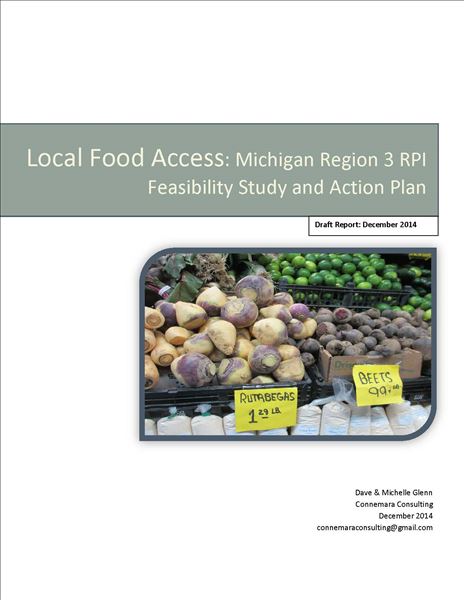Home / Regional Prosperity Initiative / RPI Strategies / Local Foods Strategy
Local Foods Strategy
 Strategy: Expand, enhance, and support the Local Foods Cluster in the Region.
Strategy: Expand, enhance, and support the Local Foods Cluster in the Region.
Download the Local Foods Strategy
Agriculture is an asset within northeast MI from which the model for innovation and entrepreneurial development can be built upon. While unemployment is high and the economy throughout Michigan is struggling with the loss of automotive and manufacturing jobs, there is huge potential to use agricultural resources in the region to increase job opportunities, especially for young adults who have limited opportunities.
Two studies have shown there is tremendous potential for improving Michigan’s economy through the development of numerous small enterprises focused on the food and farming industry. The Michigan Food Policy Council Report, completed in October 2006, and a study by the Michigan Land Use Institute and C.S. Mott Group for Sustainable Food Systems at MSU completed in September 2006 showed that “determined efforts to increase sales of fresh, local foods in Michigan could significantly boost employment and personal income across the state” (Eat Fresh and Grow Jobs, Michigan).
With the availability of land, natural resources and an underemployed workforce, Northeast Michigan could benefit greatly from a program focused on helping develop and grow new food and farming businesses to capture a portion of the fresh food market, creating numerous jobs in the local area. There are 1,474 farms in the area with an average size of 221 acres. Farmland makes up 10.4 percent of the land area overall (19.5 percent in Presque Isle and 21.2 percent in Alpena Counties), however, the majority of these farms produce hay and alfalfa, corn for silage, wheat and beans. Only 7.6 percent of the farms in Northeast Michigan produce fruit and vegetables representing only 0.1 percent of the total farm acreage.
The creation of a system of a regional food hub(s ) for northeast MI provides tremendous opportunities. A food hub is essentially an aggregation point for farm products; a central point to bring produce and goods that can then be distributed back out in quantities that are demanded by buyers. At the same time, a food hub serves as a communication hub for farmers providing training on technical issues such as food safety and traceability as well as technical information on new production methods such as organic. Individual farmers cannot grow enough, as a general rule, to supply large scale institutions and stores. Farmers traditionally do not have the marketing skills or the connections outside the region to effectively and efficiently market their products. If every farmer did this, a tremendous output of energy to this marketing need would drain away time and energy from the production side of the business jeopardizing their business and lowering the incentives for others to continue in this profession.

